Blog Archives
Holland Might Get Shock Therapy for Foot Problem
 Vicky Holland, a British triathlete who won big at this year’s Commonwealth Games, has two more important races left in the season. The first is in Stockholm, and the second is in Edmonton. Holland has plantar fasciitis in one of her feet, so she knows she has to take it easy after her final pair of triathlons.
Vicky Holland, a British triathlete who won big at this year’s Commonwealth Games, has two more important races left in the season. The first is in Stockholm, and the second is in Edmonton. Holland has plantar fasciitis in one of her feet, so she knows she has to take it easy after her final pair of triathlons.
“I’m not sure what the plan is at the end of the season, whether I will be in a boot or have shockwave therapy again, or have injections … So it’s important for me now to finish the season early, address the issues I have and then go again,” Holland said. She hopes her foot will be healthy again soon so she can start training for the next Olympics.
Shockwave therapy can be a very effective form of treatment for certain types of foot and ankle injuries. If you are interested in getting shockwave therapy for your feet, call podiatrist Sharon L. Pletcher, DPM of Family Foot Center. Dr. Pletcher will let you know if she thinks this form of treatment would be right for you.
Shockwave Therapy
Shockwave therapy is a new treatment option designed to treat bone conditions such as tennis elbow, shoulder pain, and others. This technique is used on patients that do not respond well to physiotherapy. Shockwave therapy uses high intensity sound waves that are directed to the affected tissues of the body with pinpoint accuracy. The effects are very beneficial, leading to a production of collagen fibers, eliminating inflammation.
Who Benefits from Shockwave?
Shockwave is recommended for patients suffering from heel pain and associated problems. Heel pain is a common condition which can be caused by obesity, overexertion, and spending a substantial amount of time on hard floors with your feet exposed and unsupported.
Fast and Easy
The therapy is actually a simple process that can leave patients feeling better the very next day. Shockwave therapy is not as dramatic as it sounds. It enables more blood flow to effected areas, attacking the source of the problem so treatment lasts for a long time.
For more information about Shockwave Therapy, follow the link below.
If you have any questions, please feel free to contact our office located in State College, PA. We offer the newest diagnostic and treatment technologies for all your foot and ankle injuries.
Read more about Shockwave Therapy
Foot Muscles Provide More Support than You Think
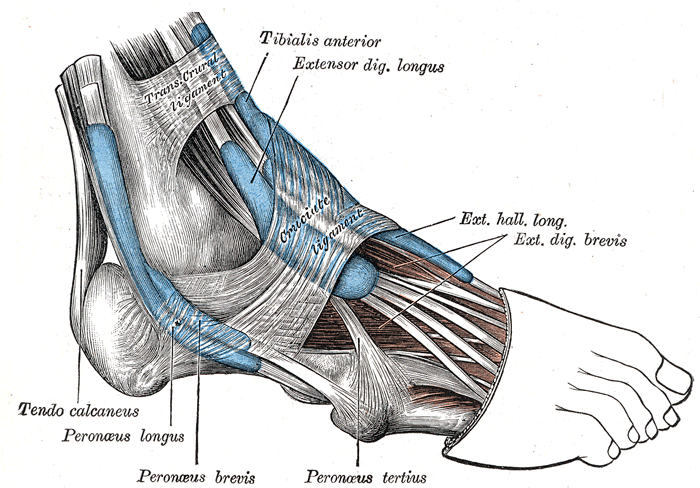 University of Queensland scientists conducted research indicating the plantar fascia is not the only muscle in the foot that can provide arch support. The first experiment involved weights being tied to the knees of two test subjects. The scientists monitored the responses of the muscles in their feet.
University of Queensland scientists conducted research indicating the plantar fascia is not the only muscle in the foot that can provide arch support. The first experiment involved weights being tied to the knees of two test subjects. The scientists monitored the responses of the muscles in their feet.
The second experiment involved electrical stimulation was performed soon after, showing that when activated, these tissues caused the arch to rise. Dr. Glen Lichtwark believes this could play an important role in fields focusing on the feet.
The biomechanics are the cogs behind the gears that manage your feet. If you would like more information, see podiatrist Sharon L. Pletcher, DPM of Family Foot Center. Dr. Pletcher can provide in-depth information as well as measure your personal foot biomechanics.
A History of Biomechanics
- Biomechanics dates back to the BC era in Egypt where evidence of professional foot care has been recorded.
- In 1974 biomechanics gained a higher profile from the studies of Merton Root, who claimed that by changing or controlling the forces between the ankle and the foot, corrections or conditions could be implemented to gain strength and coordination to the area.
Modern technology improvements are based on past theories and therapeutic processes providing a better understanding of podiatry concepts for biomechanics. Computers provide accurate determinations about the forces, moments and patterns of the foot and lower legs with the most important information captured.
Advances in materials and more awareness of biomechanics have developed enhanced corrective methods, offering further options for foot-related injuries. Understanding foot biomechanics can help improve and eliminate pain, stopping further stress to the foot.
If you have any questions, please feel free to contact our office located in State College, PA. We offer the newest diagnostic and treatment technologies for all your foot and ankle injuries.
Read more about Biomechanics of Podiatry.
Orthotics Should Provide Support for Injured Beckerman
 Kyle Beckerman of the Real Salt Lake soccer team reportedly hurt his foot while he was representing the Unites States at the 2014 World Cup. This means that he won’t be able to play in the upcoming Major League Soccer All-Star Game.
Kyle Beckerman of the Real Salt Lake soccer team reportedly hurt his foot while he was representing the Unites States at the 2014 World Cup. This means that he won’t be able to play in the upcoming Major League Soccer All-Star Game.
According to Real Salt Lake coach Jeff Cessar, Beckerman has been ordered a set of foot orthotics. In the meantime he did some light exercises at a recent team practice, but didn’t perform any of the drills. “We have to be really mindful of Kyle's body, especially going all the way back to Brazil,” Cessar said. “So we have to rest him as much as we possibly can. But his feet are really messed up.”
Many people who have lower extremity injuries choose to wear orthotics to ease their recoveries. If you think you would benefit from a foot or ankle brace,talk to podiatrist Sharon L. Pletcher, DPM of Family Foot Center. Dr. Pletchercan take a look at the afflicted area and suggest the type of orthotic she thinks would be best suited for your needs.
What are Ankle Foot Orthotics?
Orthotics are physical aids used to support weak limbs or direct the proper function of limbs. Often they are used to support the ankle and foot. Such orthotics are known as AFOs. AFOs help strengthen the muscles or train them to function in the proper position. AFOs can also benefit muscles that need to be lengthened or loosened.
Why might you need orthotics?
Orthotics are often prescribed when someone is suffering from diseases that affect the musculature, like polio and multiple sclerosis. However, more common conditions like arthritis and stroke, or those that “toe in”, may also require orthotics.
Modern orthotics have improved dramatically from the metal braces of previous years. Many of today’s orthotics are made of lightweight plastics and other advanced materials to provide new levels of comfort and support. Often the orthosis is designed in a rigid L shape that is contoured to the calf and flesh colored.
For more information about Ankle Foot Orthotics, follow the link below.
If you have any questions, please feel free to contact our office located in State College, PA. We offer the newest diagnostic and treatment technologies for all your foot and ankle injuries.
Read more about Ankle Foot Orthotics
SSoTP Fixes NHS Contract to Account for Surge of Patients with Foot Problems
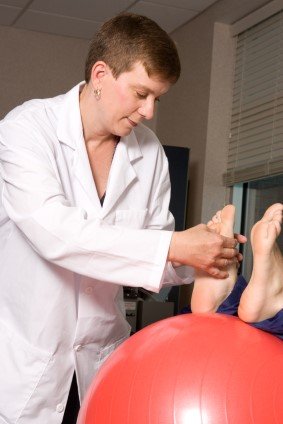 The Staffordshire and Stoke-on Trent Partnership (SSoTP), which is in charge of referring National Health Service patients with foot problems to podiatrists and chiropodists, was supposed to make appointments for 95% of newly referred patients within 3 weeks. However, they failed to meet their quota last month due to a large influx of people with foot conditions, so now their contract with the NHS has been redone with new stipulations.
The Staffordshire and Stoke-on Trent Partnership (SSoTP), which is in charge of referring National Health Service patients with foot problems to podiatrists and chiropodists, was supposed to make appointments for 95% of newly referred patients within 3 weeks. However, they failed to meet their quota last month due to a large influx of people with foot conditions, so now their contract with the NHS has been redone with new stipulations.
Under the new contract the SSoTP is responsible for guaranteeing doctor visits within two days to 90% of people with pressing foot issues. Unfortunately, patients who have problems that need regular care but aren’t as severe may experience delays of up to six weeks before getting appointments.
Since the United States doesn’t have a National Health Service, people with foot problems are expected to choose a podiatrist on their own. For professional care for any kind of foot or ankle problem, consider seeing podiatrist Sharon L. Pletcher, DPM of Family Foot Center. Dr. Pletcher will provide you with comprehensive and effective care for your foot condition.
Choosing a Podiatrist
It is important to find a good podiatrist when it comes to healing your foot concerns and pain. A good podiatrist should know how to identify your condition and should suggest the necessary treatments that can be done so that you can get back to good health.
Choosing a podiatrist is a relatively easy task that can be done through an online search engine, word of mouth via a friend, directory listings, yellow book, advertisements, newspaper ads, etc. It is up to you to choose the one that you feel is the closest to your location, is experienced and has a good reputation in the field.
It is best to find one that cares about your health overall and is open and happy to help you alleviate any pain you might be experiencing. Another thing to consider may be the costs of a podiatrist, what insurance carrier you have and also if they specialize in anything specific.
Visit your podiatrist at the first signs of pain, discomfort, or injuries and if you notice any unexplainable pain in the feet.
If you have any questions, please feel free to contact our office located in State College, PA. We offer the newest diagnostic and treatment technologies for all your foot and ankle injuries.
Read more about Choosing a Podiatrist
Brandon Moss’ Ankle Betrays Him During Run to First
 Brandon Moss managed to hit a ground ball toward short stop during his at-bat in the eighth inning of one of the Oakland A’s recent games, but he never got to first base. He lost his balance and fell after only taking a few steps and had to be helped off the field. A’s manager Bob Melvin later revealed to the press that Moss had sprained his ankle.
Brandon Moss managed to hit a ground ball toward short stop during his at-bat in the eighth inning of one of the Oakland A’s recent games, but he never got to first base. He lost his balance and fell after only taking a few steps and had to be helped off the field. A’s manager Bob Melvin later revealed to the press that Moss had sprained his ankle.
It’s still unknown how long Moss will be out of commission for. He claims that he sprained his ankle once a few years ago and that his recovery only took a few days, but since the severity of the injury is still a mystery, it remains to be seen exactly how many games he’ll have to miss.
Sprained ankles are fairly common injuries, but they deserve careful podiatric treatment nonetheless. If your ankle hurts and you think it might be sprained, visit podiatrist Sharon L. Pletcher, DPM of Family Foot Center. Dr. Pletcher can get you an accurate diagnosis and provide you with the expert care you need.
Sprained Ankles
How Does an Ankle Sprain Happen?
This type of injury takes place when the ligaments are torn or stretched beyond their limits. There are multiple ways that the ankle can become injured; however, even the simple act of walking may cause a sprain. If footing is lost or you are walking on uneven terrain, ankle damage may occur.
What are the Symptoms?
- Mild to moderate bruising
- Limited mobility
- Swelling
- Discoloration of the skin, depending on severity
Is there a Way to Care for my Ankle at Home?
Self-care for ankle sprains includes propping the ankle up and keeping it elevated, applying ice packs as needed, and remaining off your feet. Some may also find that wrapping the ankle with an ACE bandage and taking over-the-counter pain relievers are helpful. One of the most important things is to avoid further stress to the affected area.
Preventing a Sprain
- Wearing appropriate shoes for the occasion
- Stretching before exercises and sports
- Knowing your limits can aid in prevention
For more information about Sprained Ankles, follow the link below.
If you have any questions, please feel free to contact our office located in State College, PA. We offer the newest diagnostic and treatment technologies for all your foot and ankle injuries.
Read more about Sprained Ankles
Australian Athlete Withdraws from Triathlon Due to Stress Fracture
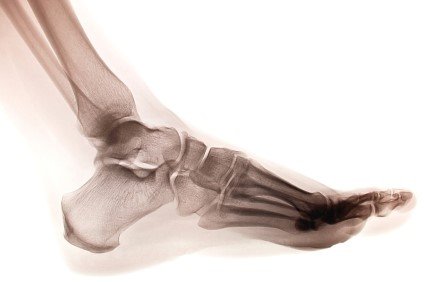 Triathlete Tamsyn Moana-Veale flew all the way from Australia to Morocco to compete in the 2014 Larache ATU Sprint Triathlon, only to find out when she got there that she had a stress fracture in her foot that would prevent her from competing in the running portion of the race. However, her doctors gave her the go-ahead to participate in the swimming and cycling segments, so she resolved to at least do her very best during those.
Triathlete Tamsyn Moana-Veale flew all the way from Australia to Morocco to compete in the 2014 Larache ATU Sprint Triathlon, only to find out when she got there that she had a stress fracture in her foot that would prevent her from competing in the running portion of the race. However, her doctors gave her the go-ahead to participate in the swimming and cycling segments, so she resolved to at least do her very best during those.
In a way Moana-Veale ended up being able to win vicariously through her training partner Anel Radford, who finished in second place.
A stress fracture can put even the most seasoned athletes out of commission. For assistance with a stress fracture or any other condition of the feet and ankles, speak to podiatrist Sharon L. Pletcher, DPM of Family Foot Center. Dr. Pletcher will examine the afflicted area and recommend the treatment option that she thinks would best suit you.
Dealing with Stress Fractures of the Foot and Ankle
The Stress Fractures occur on the foot and ankle when muscles in these areas weaken from too much or too little use. Then the feet and ankles lose support when walking or running from the impact of the ground. Since there is no protection the bones receive the full impact of each step. The stress on the feet causes cracks to form in the bones, thus called stress fractures.
What are Stress Fractures?
Stress fractures occur frequently in individuals whose daily activities cause great impact on the feet and ankles. Stress factors are most common among:
-runners
-people affected with Osteoporosis
-play tennis or basketball
-gymnastics
-high impact workouts
Symptoms
Pain from the fractures occur in the area of the fractures, and can be constant or intermittent. It will often cause sharp or dull pain with swelling and tenderness. Engaging in any kind of activity which involves in high impact will aggravate pain.
Treatment
The individual and the degree of injury depend on the fracture of the foot. Some fractures heal very fast while others take longer.
For more information about Stress Fractures in the Feet and Ankles, follow the link below.
If you have any questions, please feel free to contact our office located in State College, PA. We offer the newest diagnostic and treatment technologies for all your foot and ankle injuries.
Read more about Stress Fractures of the Feet and Ankles
Flip Flops Can Make Driving Difficult and Dangerous
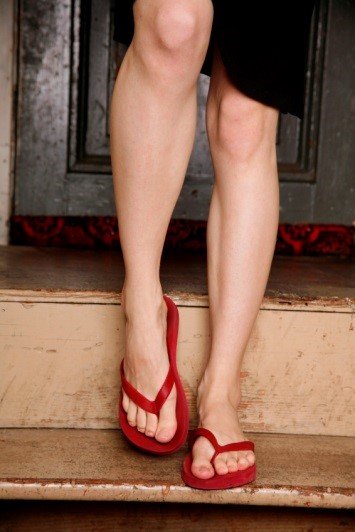 Flip flops may be a stylish and comfortable footwear option for leisure time in the summer, but they can be very hazardous when worn while driving. Insurance agents and driving safety experts claim that flip flops have a tendency to get tangled in cars’ brakes and can sometimes cause bad accidents on the road.
Flip flops may be a stylish and comfortable footwear option for leisure time in the summer, but they can be very hazardous when worn while driving. Insurance agents and driving safety experts claim that flip flops have a tendency to get tangled in cars’ brakes and can sometimes cause bad accidents on the road.
The design of this type of sandal also prevents the driver’s feet from activating the pedals right away. Studies have shown that wearing them while operating a vehicle makes decelerating take about .13 seconds longer than it normally would.
Walking in flip flops can also be dangerous, as they frequently lead to the development of painful foot and ankle problems. If you think your flip flops are causing you to develop a lower limb condition, consult with podiatrist Sharon L. Pletcher, DPM of Family Foot Center. Dr. Pletcher can take a look at your feet and help you with any damage this fashionable footwear might have caused.
Flip-Flops and Feet
When the weather starts warming up, people enjoy wearing flip-flops. Flip-flops are comfortable, stylish, and easy to slip on and off, perfect for any summer beach goer. However, these shoes can cause harm to the feet.
How Can Flip-Flops Affect Me Long-Term?
- Ankle problems
- Hip problems
- Lower back problems
- Pain in the balls of the feet
- Problems with foot arches
- Changes in the way you walk
Are there injuries associated with flip-flops?
Yes. Since flip-flops are relatively weak and do not provide the same amount of support as sneakers, people who wear flip-flops are more susceptible to injuries. On top of that, the open nature of the shoe makes your feet more prone to other problems, such as cuts and even infections. Common injuries and ailments include:
- Sprained ankles
- Blisters
- Infections
- Cuts and Scrapes
I like wearing flip-flops, are there safe alternatives?
When buying flip-flops, try to find ones that have sturdy soles and are made of high quality materials that will support for your feet. These flip-flops will cost more, but will also last longer as a result.
For more information about Flip Flops and Feet, follow the link below.
If you have any questions, please feel free to contact our office located in State College, PA. We offer the newest diagnostic and treatment technologies for all your foot and ankle injuries.
Read more about Flip Flops and Feet
Nurse Has Surgery to Get Rid of Agonizing Neuroma
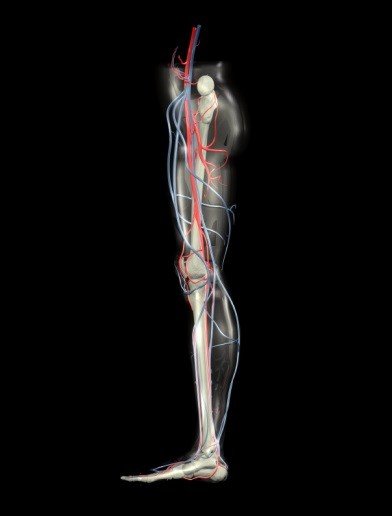 A nurse from Bruntingthorpe named Wendy Desbrow struggled with foot pain for four years before she finally got the medical care that she needed. Her discomfort started one day while she was working on a home improvement project, then started to grow exponentially. Activities like shopping and driving became out of the question as her agony grew to be unbearable.
A nurse from Bruntingthorpe named Wendy Desbrow struggled with foot pain for four years before she finally got the medical care that she needed. Her discomfort started one day while she was working on a home improvement project, then started to grow exponentially. Activities like shopping and driving became out of the question as her agony grew to be unbearable.
Desbrow bounced around between several doctors without getting a proper diagnosis, until finally a specialist figured out that her problem was a case of Morton’s neuroma. A short while later she had her nerves fixed surgically, and now her foot has never felt better.
Morton’s neuroma is a painful nerve condition that can develop for a variety of different reasons. For help dealing with a neuroma or any other nerve disorder of the feet, talk to podiatrist Sharon L. Pletcher, DPM of Family Foot Center. Dr. Pletcher will recommend an appropriate form of treatment for your condition and answer any questions that you might have.
Morton’s Neuroma
Morton's neuroma is a painful foot condition that commonly affects the areas between the third and fourth toe and the ball of the foot, although other areas of the foot are also susceptible to this condition. Morton’s neuroma is caused by an inflamed nerve in the foot that is being squeezed and aggravated by surrounding bones. Women are more likely than men to have an occurrence of this foot condition. When a person has Morton's neuroma, it can feel as if they are walking on stones or marbles.
What Increases the Chances of having Morton’s Neuroma?
-Ill-fitting high heels or shoes that add pressure to the toe or foot area.
-Jogging, running and any sports that involve constant impact to the foot area.
-Flat feet, bunions, and any other foot deformity may put you at a higher risk for developing Morton’s neuroma.
If you suspect that you may have this condition, you should visit your podiatrist. A podiatrist will conduct a thorough physical examination to check for palpable masses between the bones of the foot.
For more information about Morton’s Neuroma, follow the link below.
If you have any questions, please feel free to contact our office located in State College, PA. We offer the newest diagnostic and treatment technologies for all your foot and ankle injuries.
Read more about Morton’s Neuroma
Man Sustains Blisters for Charity’s Sake
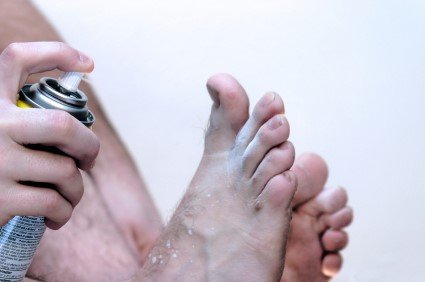 Philip Wells ditches the shoes as he traverses across the country of England to raise awareness and funds for three charities. These charities include the Born Free Foundation, the Consortium for Street Children, and Ocean Stars Trust. All three organizations support disenfranchised children in poverty worldwide. Although Wells contends with blisters and sores on his feet, Wells began his journey towards the end of this month.
Philip Wells ditches the shoes as he traverses across the country of England to raise awareness and funds for three charities. These charities include the Born Free Foundation, the Consortium for Street Children, and Ocean Stars Trust. All three organizations support disenfranchised children in poverty worldwide. Although Wells contends with blisters and sores on his feet, Wells began his journey towards the end of this month.
“People are sending in ‘foot selfies’ and generously donating as I walk. Despite struggling with my feet, I am determined to continue and raise awareness for the children who suffer every day of their lives.” Wells says. His ultimate aspiration is to provide aid for these children who must walk barefoot everyday, trying to walk a mile in their shoes (or in their case, without).
Blisters can be a source of pain and discomfort. If you sustained blisters on your feet, see podiatrist Sharon L. Pletcher, DPM of Family Foot Center. Dr. Pletcher can treat your foot and ankle needs with professionalism and care.
Foot Blisters
Foot blisters develop as a result of constantly wearing tight or ill-fitting footwear. This happens due to the constant rubbing from the shoe, which can often lead to pain.
What are Foot Blisters?
A foot blister is a small fluid-filled pocket that forms on the upper-most layer of the skin. Blisters are filled with clear fluid and can lead to blood drainage or pus if the area becomes infected.
How do Blisters Form?
Blisters on the feet are often the result of constant friction of skin and material, usually by shoe rubbing. Walking in sandals, boots, or shoes that don’t fit properly for long periods of time can result in a blister. Having consistent foot moisture and humidity can easily lead to blister formation.
Prevention & Treatment
It is important to properly care for the affected area in order to prevent infection and ease the pain. Do not lance the blister and use a band-aid to provide pain relief. Also, be sure to keep your feet dry and wear proper fitting shoes. If you see blood or pus in a blister seek a doctor.
If you have any questions, please feel free to contact our office located in State College, PA. We offer the newest diagnostic and treatment technologies for all your foot and ankle injuries.
Read more about Blisters
Severs Disease A Reality for Son of Housewives Star
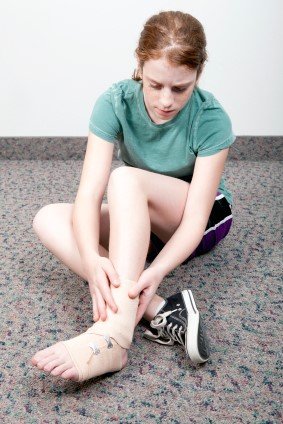 Reality TV might be fake, but star Heather Dubrow had some real life drama involving her son. The Real Housewives of Orange County reality TV star took Nicholas to the hospital since he experienced some pain in his heel. Doctors diagnosed Nicholas with Sever’s disease, a bone disorder common among minors.
Reality TV might be fake, but star Heather Dubrow had some real life drama involving her son. The Real Housewives of Orange County reality TV star took Nicholas to the hospital since he experienced some pain in his heel. Doctors diagnosed Nicholas with Sever’s disease, a bone disorder common among minors.
Dubrow later uploaded a photo of her son and his doctor on Instagram with the caption: “Thank you SO much to our dear friend Dr. Scott Forman for taking care of Nicky!! #sever'sdisease #inflammationofthegrowthplate #castfortwoweeks.” Nicholas is said to be in condition other than having to wear a plaster cast for some time.
Severs Disease often occurs in children and teens. If your child is contending with foot or ankle pain, see podiatrist Sharon L. Pletcher, DPM of Family Foot Center. Dr. Pletcher can treat your child’s foot and ankle needs.
Sever’s Disease
Sever’s disease is also known as calcaneal apophysitis, which is a medical condition that causes heel pain I none or both feet. The disease is known to affect children between the ages of 8 and 14.
Sever’s disease occurs when part of the child’s heel known as the growth plate (calcaneal epiphysis) is attached to the Achilles tendon. This area can suffer injury when the muscles and tendons of the growing foot do not keep pace with bone growth. Therefore, the constant pain which one experiences at the back of the heel will make the child unable to put any weight on the heel. The child is then forced to walk on their toes.
Toe gait- develops in which the child must change the way they walk to avoid placing weight on the heel. This can lead to other problems as well in the future.
Symptoms
Acute pain – pain asscoiatied with Sever’s disease is usually felt in the heel when the child engages in physical activity such as walking, jumping and or running.
Highly active – children who are very active are among the most susceptible in experiencing Sever’s disease, because of the stress and tension placed on their feet.
For more information about Sever’s Disease, follow the link below.
If you have any questions, please feel free to contact our office located in State College, PA. We offer the newest diagnostic and treatment technologies for all your foot and ankle injuries.
Read more about Sever’s Disease
More...
NASCAR Reporter Breaks Ankle during Interview
 Reporter Dustin Long of the Motor Racing Network recently broke his ankle while trying to interview NASCAR driver Dale Earnhardt, Jr. at Pocono Raceway. The two were walking and talking and ended up in the NASCAR inspection area, where Long took a nasty fall from off of the scales.
Reporter Dustin Long of the Motor Racing Network recently broke his ankle while trying to interview NASCAR driver Dale Earnhardt, Jr. at Pocono Raceway. The two were walking and talking and ended up in the NASCAR inspection area, where Long took a nasty fall from off of the scales.
He later uploaded a photo of his mangled ankle on Twitter, to which Earnhardt, Jr. responded with a post profusely apologizing for leading him into such a dangerous area of the track. Luckily Long was able to take the incident in stride and ended up being well enough to cover that weekend’s race at Pocono anyway.
Broken ankles are usually incredibly painful and can sometimes take a while to recover from. If you need help dealing with a broken ankle, call podiatrist Sharon L. Pletcher, DPM of Family Foot Center. Dr. Pletcher will determine how badly hurt you are and treat your injury with the knowledge and skills of a seasoned medical professional.
Broken Ankles
The ankle consists of three bones- the tibia, the fibula, and the talus. The tibia and the fibula are the two bones that connect to your knees. They sit directly above the talus bone, which is protected by a fibrous membrane and allows slight movement in the ankle joint. A break usually occurs in one of these bones after the foot is twisted too far, a strong impact like jumping from a great height, or repeated stresses like running.
Diagnosis
If you suffer an ankle injury, it is essential that you receive a correct diagnosis. One of the first signs that the ankle is broken is an inability to put any weight on it. There will often be severe bruising and swelling at the sight of the injury. Your doctor may also order an x-ray be taken to determine the exact location and extent of the injury.
Treatment
Without proper care, a broken ankle may not heal properly and could cause arthritis and instability later in life. Therefore, seeking proper treatment is essential to making a full recovery.
There a number of steps you can take to accelerate the healing process however.
For more information about Broken Ankles, follow the link below.
If you have any questions, please feel free to contact our office located in State College, PA. We offer the newest diagnostic and treatment technologies for all your foot and ankle injuries.
Read more about Broken Ankles
Baseball Player’s International Career Hampered by Plantar Fasciitis
 Former MLB player Kevin Youkilis went international when he was contracted to play with Japanese team the Rakuten Golden Eagles. However, after contending with chronic plantar fasciitis, Youkilis was forced to make an early leave. Youkilis was signed a deal to play afull season, but as his symptoms progressed Youkilis had to make treatment his number one priority.
Former MLB player Kevin Youkilis went international when he was contracted to play with Japanese team the Rakuten Golden Eagles. However, after contending with chronic plantar fasciitis, Youkilis was forced to make an early leave. Youkilis was signed a deal to play afull season, but as his symptoms progressed Youkilis had to make treatment his number one priority.
"It was definitely a unique experience," Youkilis said, who remains positive in spite of his setback. "It was fun being in a different culture, learning a new language.” Youkilis returned to the states to make a guest appearance for the Red Sox’s anniversary celebration in Fenway Park.
Plantar fasciitis can be painful and debilitating. If you have foot or ankle pain, visit podiatrist Sharon L. Pletcher, DPM of Family Foot Center. Dr. Pletcher can treat your foot and ankle needs with professionalism and care.
What is Plantar Fasciitis?
Plantar fasciitis refers to heel and arch pain caused by an inflammation of the connective tissues on the bottom of the foot.
What Causes Plantar Fasciitis?
- Ill-fitting shoes
- Weight change
- Excessive running
- Non-supportive shoes
- Overpronation
How Can It Be Treated?
- Conservative measures – anti-inflammatories, ice packs, stretching exercises, physical therapy, orthotic devices.
- Shockwave therapy – sends sound waves to the areas where pain is experience. Requires multiple sessions. This is used for very persistent cases of plantar fasciitis.
- Ultrasound-guided technique with steroid injections into the plantar fascia. This is from a relatively new and small study, but was shown to be effective in most cases treated.
If you have any questions, please feel free to contact our office located in State College, PA. We offer the newest diagnostic and treatment technologies for all your foot and ankle injuries.
Read more about Plantar Fasciitis
MMA Fighter Reveals Broken Toe at Press Conference
 Luke Rockhold was able to defeat opponent Tim Boetsch in a middleweight MMA bout at UFC 172. Unfortunately, Rockhold’s victory was not without his share of cuts and bruises, or injuries. Rockhold later revealed at the event’s post night press conference that he sustained a broken toe.
Luke Rockhold was able to defeat opponent Tim Boetsch in a middleweight MMA bout at UFC 172. Unfortunately, Rockhold’s victory was not without his share of cuts and bruises, or injuries. Rockhold later revealed at the event’s post night press conference that he sustained a broken toe.
Rockhold displayed the X-rayed injury on Instagram. The photo indicated that Rockhold the middle toe in his right foot. According to the UFC rankings Rockhold is number 5 in the world rankings, making a title bout a possibility in the near future.
Broken toes can make pain feel like you’re trapped in a cage. If you injured your toe, see podiatrist Sharon L. Pletcher, DPM of Family Foot Center. Dr. Pletcher can attend to your foot and ankle injuries.
What to Know About a Broken Toe
Although most people try to avoid foot trauma such as banging, stubbing, or dropping heavy objects on their feet, the unfortunate fact is that it is a common occurrence. Given the fact that toes are positioned in front of the feet, they typically sustain the brunt of such trauma. When trauma occurs to a toe, the result can be a painful break (fracture). Another type of trauma that can break a toe is repeated activity that places stress on the toe for prolonged periods of time.
Symptoms of a Broken Toe
- throbbing pain
- swelling
- bruising on the skin and toenail
- inability to move the toe with ease.
- crooked or disfigured appearance
- tingling or numbness in the toe
- fever or chills throughout their body
It is best to stay off of the injured toe with the affected foot elevated on pillows. Alleviate swelling by placing an ice pack on the broken toe for 15 minutes every two hours then taping the two toes together with medical tape.
For more information on broken toe please follow link below.
If you have any questions, please feel free to contact our office located in State College, PA. We offer the newest diagnostic and treatment technologies for all your foot and ankle injuries.
Read more on Broken Toe
Many Americans Reject Podiatric Aid
 The American Podiatric Medical Association (APMA) showcased the results of the Today’s Podiatrist survey. This survey measured the general public’s attitude toward foot and ankle health. The survey consisted of one thousand Anerican adults, 77 percent who have experienced some kind of foot pain. Despite the high percentage, only one third of those who experienced pain actually sought the care of a podiatrist. Foot pain can negatively affect the quality of our lives.
The American Podiatric Medical Association (APMA) showcased the results of the Today’s Podiatrist survey. This survey measured the general public’s attitude toward foot and ankle health. The survey consisted of one thousand Anerican adults, 77 percent who have experienced some kind of foot pain. Despite the high percentage, only one third of those who experienced pain actually sought the care of a podiatrist. Foot pain can negatively affect the quality of our lives.
"It's not surprising to see how many people are affected by foot pain, when survey results show that we view our feet as the least important body part in terms of our overall health and wellbeing," said APMA President Frank Spinosa, DPM. "Our feet are literally and figuratively the furthest things from our minds."
A podiatrist is a physician who provides foot and ankle care. If you need foot or ankle care, see podiatrist Sharon L. Pletcher, DPM of Family Foot Center. Dr. Pletcher will treat your podiatric needs.
What is a Podiatrist?
The branch of medicine that is focused on the treatment, diagnosis, and study of disorders of the lower leg, ankle and foot is referred to as podiatry. Someone would seek care in the field of podiatry when they have suffered a foot injury or have common foot ailments such as: heal spurs, bunions, arch problems, deformities, ingrown toenails, corns, foot and ankle problems etc.
Podiatric Treatment
A podiatrist will treat the problematic areas of the feet, ankle or lower leg by prescribing the following:
- physical therapy
- drugs
- perform surgery on lower extremity fractures
- orthotic inserts or soles
A common podiatric procedure a podiatrist will use is a scanner or force plate which will allow the podiatrist to know the designs of orthotics. Patients are then told to follow a series of tasks to complete the treatment. The computer will scan the foot a see which areas show weight distribution and pressure points. The podiatrist will read the analysis and then determine which treatment plans are available.
If you have any questions, please feel free to contact our office located in State College, PA. We offer the newest diagnostic and treatment technologies for all your foot and ankle injuries.
Read more about What Is a Podiatrist




